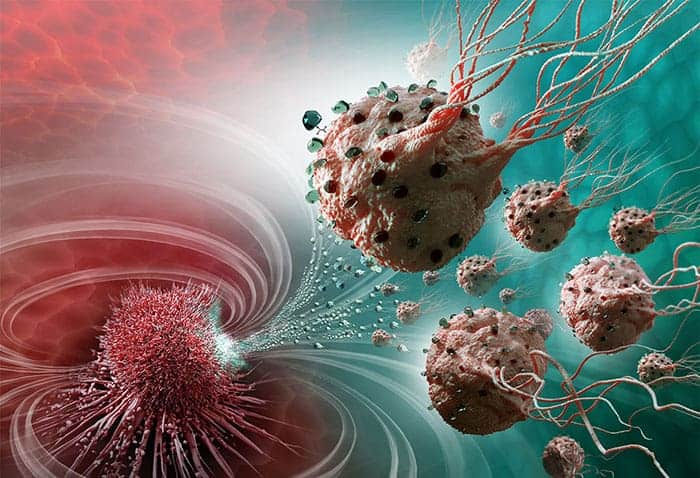Radiation Therapy
- Charlotte Li

- Apr 13, 2024
- 2 min read
In modern medicine, radiation therapy stands as one of its hallmarks, as one of the most common treatments for cancer. There are many forms of radiation therapy, some external and others internal. In this article, we will discover how radiation therapy affects cancer on a molecular scale.
The Basics of Cancer
Cancer on the most foundational level is the disruption of its cell cycle. Cancer must bypass its cancer-suppressing genes, while at the same time hiding from the immune system. After bypassing all of these checkpoints, cancer starts to increase. The cancer cells continue duplicating until they dominate the resources that the healthy cells need. This can cripple the organ's ability to perform tasks and can spread over the body. This phase is called metastasis, which usually leads to more intense and damaging cancer treatments.
Types of Radiational Therapy
The goal of radiation therapy is to damage the cancer cell's DNA, which will stop its cells from dividing, causing the cancer to die. Though this is the best outcome, oftentimes the DNA of surrounding cells can get damaged as well, which with a functional regulatory system will enable apoptosis.
Radiation therapy is a treatment where they will shoot a beam of radiation whether that be photons, protons, or electrons. Each of these beams has its specific uses, photons are a different way of saying X-rays. Delivered at special doses, since this type of radiation can scatter and will affect normal tissue behind the tumor. Protons work differently than photons, they are said to only affect the tumor and not affect other tissues. The third type of ray is the electron beam, being the lowest penetrating beam. This is often used on the surface of the skin for cancers such as Melanoma. Radiation treatment can also take the form of an implant, often in the tissue of the body. These implants can be used for breast cancer, where they will seal a radioactive substance in a ribbon or a capsule. This implant will sit in a cavity or tissue, near the tumor. Liquid radiation may also be a route that a doctor takes, this form of radiation is common for the treatment of thyroid cancer. However, this form of treatment is called Radiotherapy. This form of treatment requires you to stay at the hospital until it falls to safe levels.
Radiation therapy has always been proven to be a very effective way of combating cancer. Through the use of rays, implantation, and injections, it has clearly shown how much cancer research has truly progressed.
References
Website, N. (2023, June 16). What happens. nhs.uk. https://www.nhs.uk/conditions/radiotherapy/what-happens/#:~:text=Radiotherapy%20injections%2C%20capsules%20or%20drinks,you%20swallowed%20or%20have%20injected.
Internal Beam Radiation Therapy and Treatments | UPMC. (n.d.). UPMC Hillman Cancer Center. https://hillman.upmc.com/cancer-care/radiation-oncology/treatment/internal#:~:text=It%20kills%20cancer%20cells%20with,Brachytherapy.




Comments